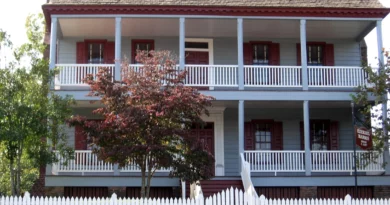History of Colorado Springs Colorado
Colorado Springs, nestled at the base of Pikes Peak in the Rocky Mountains, is a city rich in history and natural beauty. Known today for its thriving community, military presence, and outdoor recreational opportunities, Colorado Springs has a storied past that stretches from its indigenous roots to its establishment as a resort town and eventual development into a modern urban center. This article explores the fascinating history of Colorado Springs, highlighting the key events and figures that have shaped the city into what it is today.
Indigenous Inhabitants
Long before European settlers arrived, the region now known as Colorado Springs was home to Native American tribes, including the Ute, Cheyenne, and Arapaho. These tribes revered the area, particularly Pikes Peak, which they considered sacred. The Ute people, the longest continuous residents of Colorado, used the natural springs in the area for their healing properties.
European Exploration and Settlement
The first European to explore the region was Spanish explorer Don Juan de Oñate in the late 16th century, but it wasn’t until the 1806 expedition of Zebulon Pike that the area gained wider attention. Pike’s unsuccessful attempt to climb the mountain that would later bear his name marked the beginning of American interest in the region.
In 1859, during the Pikes Peak Gold Rush, the first wave of settlers arrived in what would become Colorado Springs, drawn by the promise of gold and other natural resources. Although gold was not found in significant quantities, the settlers quickly recognized the area’s potential as a health resort due to its natural beauty and temperate climate.
Founding of Colorado Springs
Colorado Springs was officially founded on July 31, 1871, by General William Jackson Palmer, a Civil War hero and railroad magnate. Palmer envisioned Colorado Springs as a resort destination and health spa for wealthy Easterners and British tourists. He designed the city with wide streets, tree-lined avenues, and ample green spaces, which earned it the nickname “Little London” due to its popularity among British tourists.
Palmer’s vision attracted affluent settlers, and the city quickly grew as a hub of culture and refinement. In 1872, Palmer founded Colorado College, which remains one of the city’s key educational institutions. The city’s development was also boosted by the construction of the Denver & Rio Grande Railroad, which Palmer founded, connecting Colorado Springs to Denver and other key locations.
The Gold Rush Boom and Economic Development
While Colorado Springs was initially established as a resort town, it experienced significant growth during the Cripple Creek Gold Rush in the 1890s. Located just west of Colorado Springs, Cripple Creek became one of the richest gold mining districts in the world. Colorado Springs served as a supply center for the miners and as the site for ore processing, which fueled economic growth and increased the city’s population.
In the early 20th century, the city diversified its economy beyond tourism and mining. It became a popular location for tuberculosis sanatoriums due to its dry climate and high altitude, which were believed to be beneficial for respiratory health. This medical tourism further contributed to the city’s growth and reputation as a health destination.
Military Presence and World War II
The establishment of military installations in the mid-20th century had a profound impact on Colorado Springs. During World War II, Camp Carson (now Fort Carson) was established as a training facility, bringing thousands of soldiers to the area. The presence of the military continued to grow with the opening of the United States Air Force Academy in 1958 and the North American Aerospace Defense Command (NORAD) in 1966, cementing Colorado Springs’ status as a critical military hub.
Modern Era and Growth
In the latter half of the 20th century, Colorado Springs expanded rapidly, attracting businesses, residents, and tourists alike. The city’s population surged, leading to suburban development and the expansion of infrastructure. Today, Colorado Springs is known for its high quality of life, outdoor recreation opportunities, and as a center for the aerospace and defense industries.
The city’s cultural and historical landmarks, such as the Garden of the Gods, Pikes Peak, and the Manitou Springs Historic District, continue to draw visitors from around the world. Colorado Springs has managed to retain much of its historical charm while adapting to the needs of a growing population.
Conclusion
Colorado Springs’ history is a reflection of the broader American experience, from its Native American roots and European exploration to its establishment as a health resort, its role in the gold rush, and its transformation into a modern city with a strong military presence. The city’s rich history and natural beauty make it a unique and fascinating place to explore, offering insights into the past while continuing to thrive in the present.
Discover more from City Towner
Subscribe to get the latest posts sent to your email.



